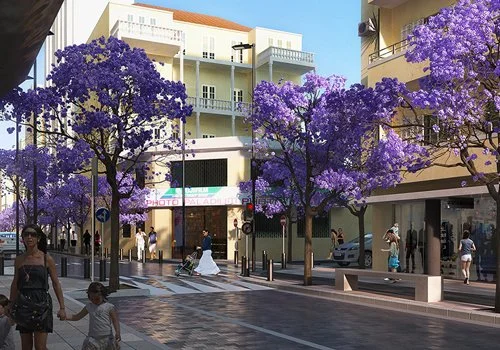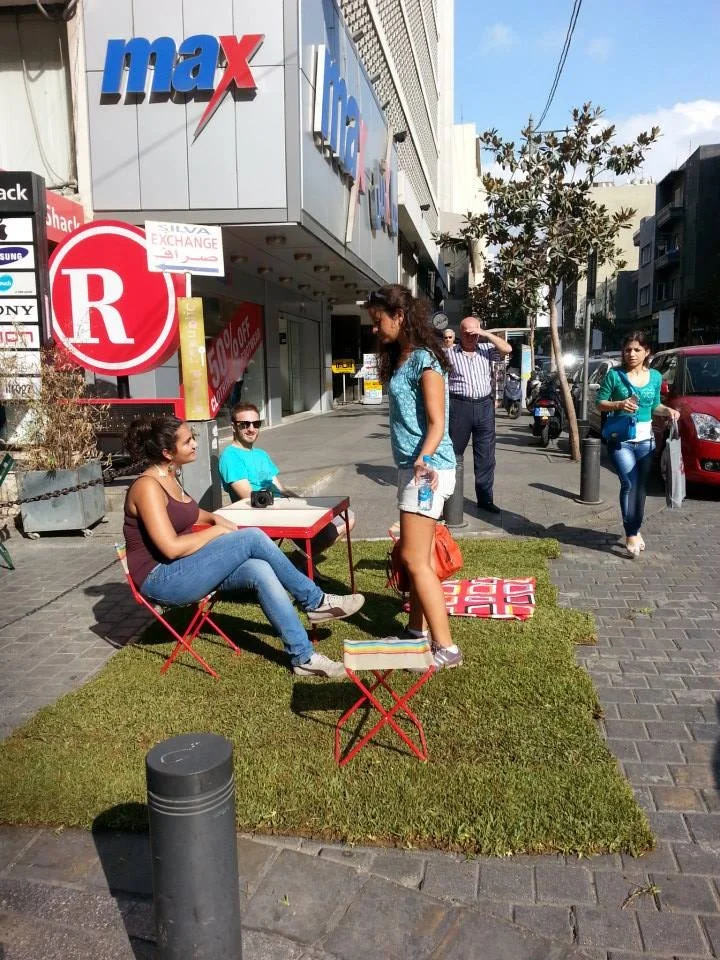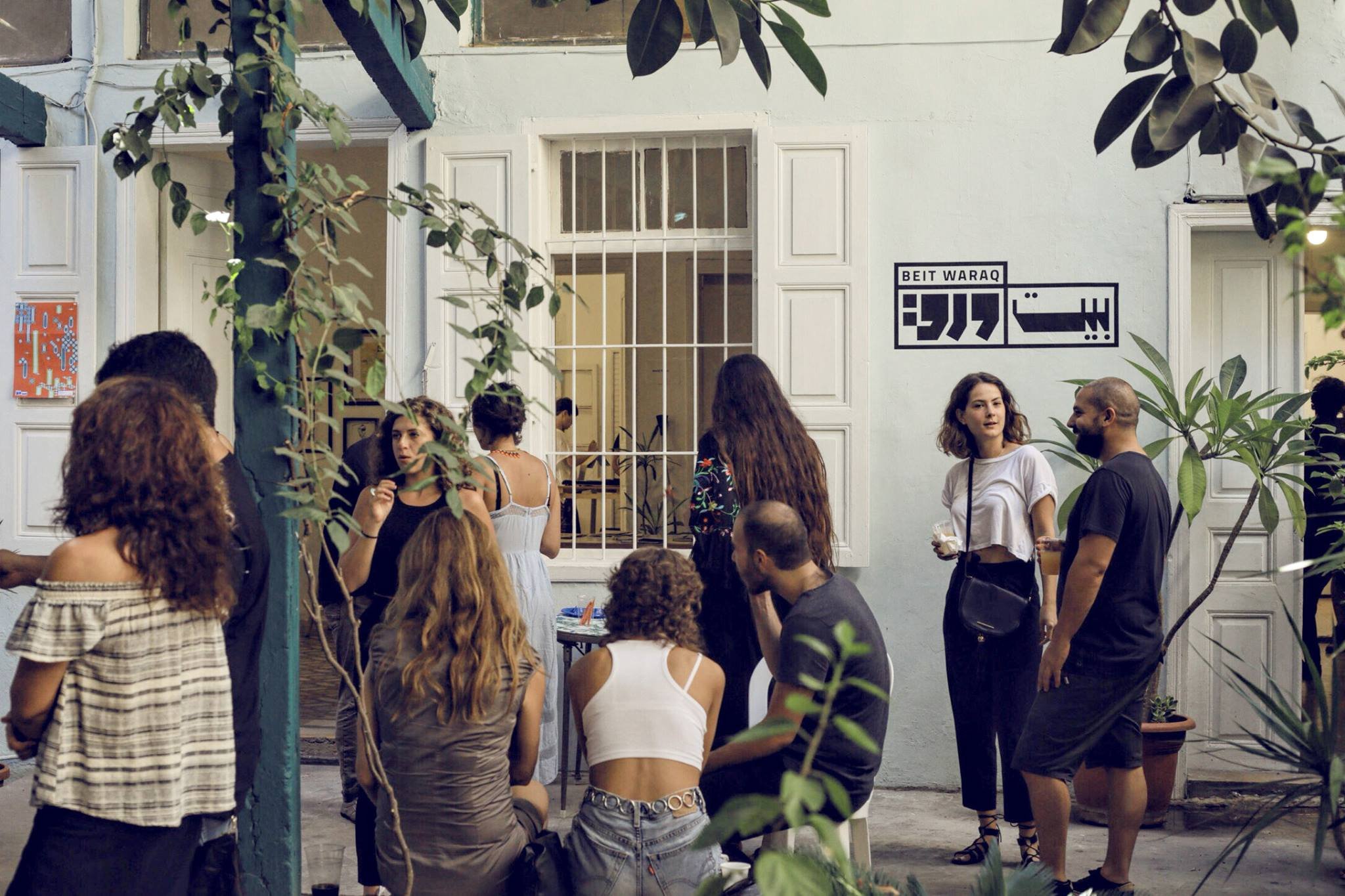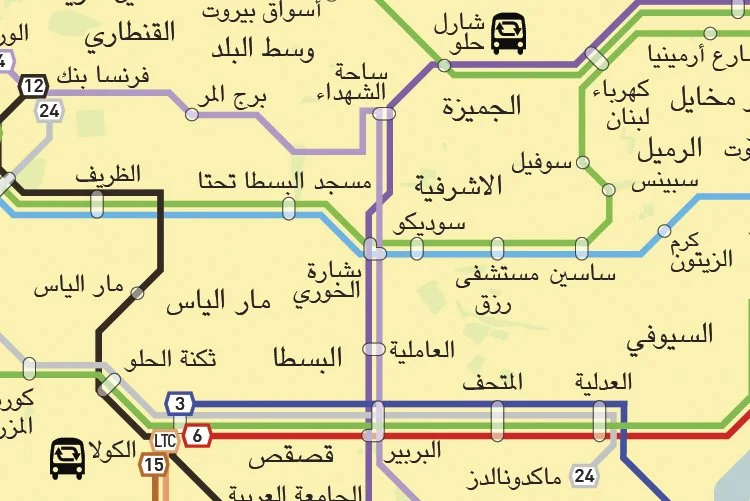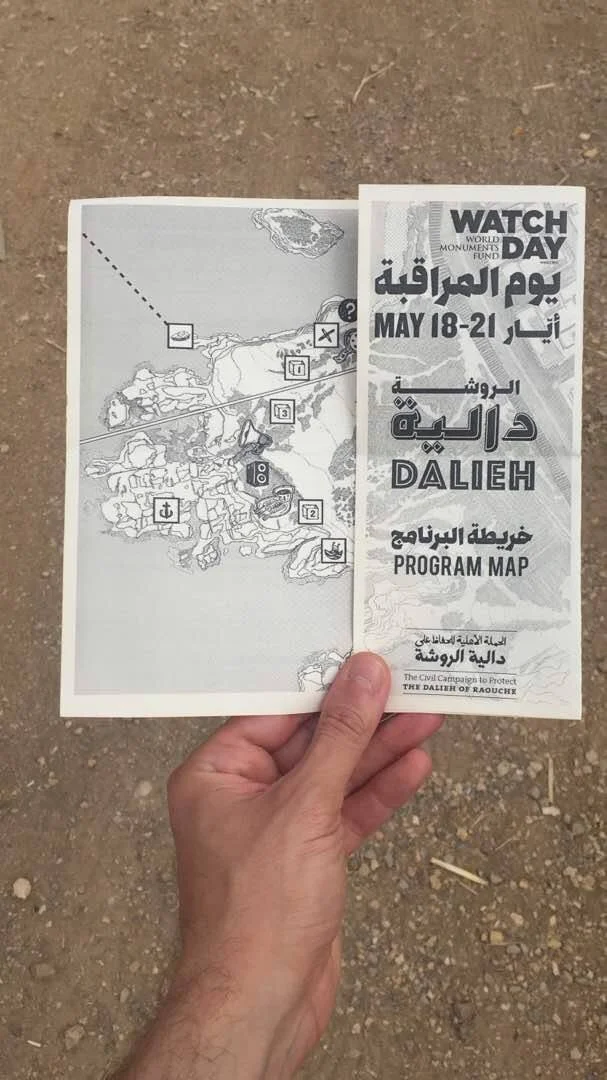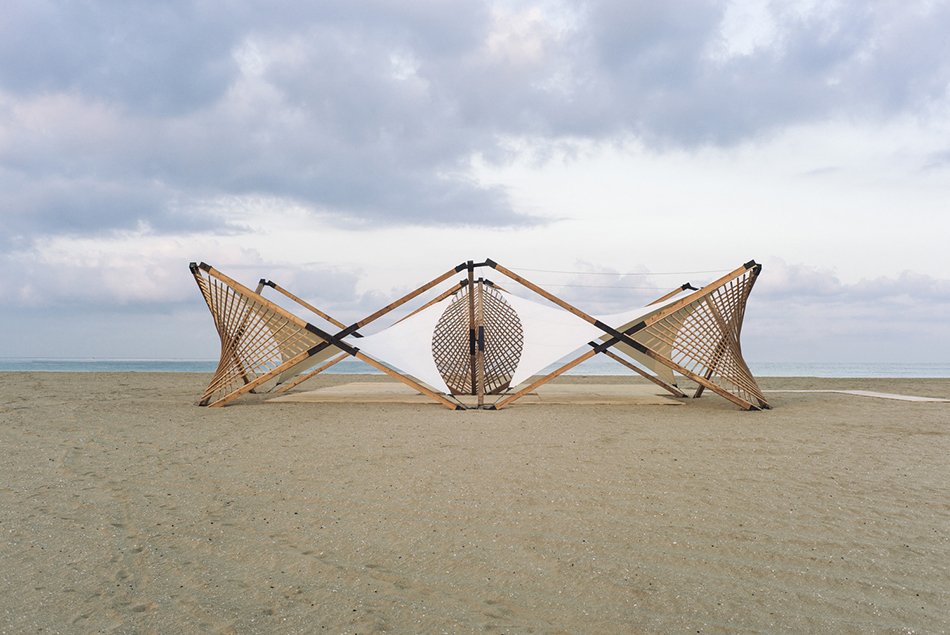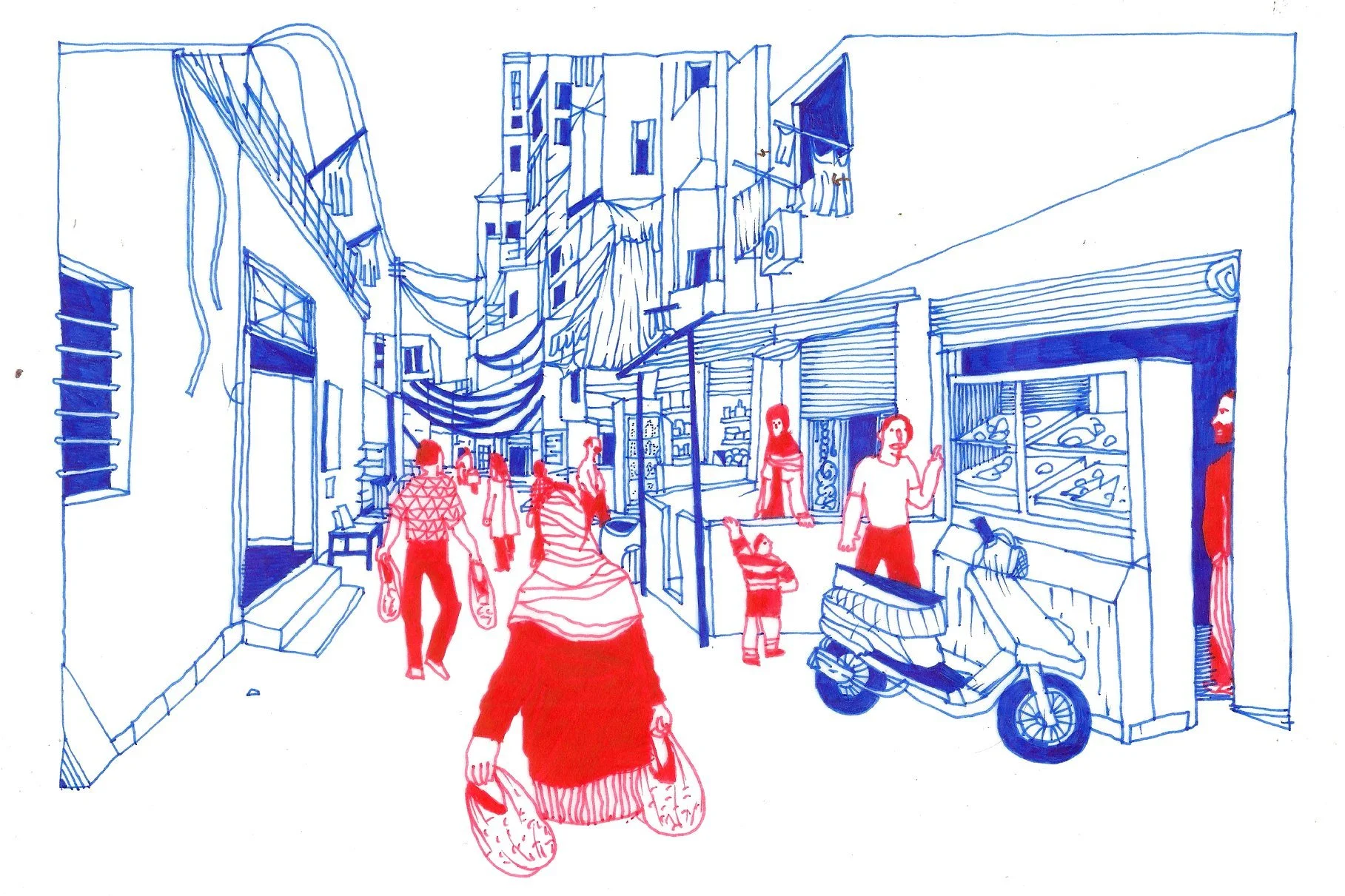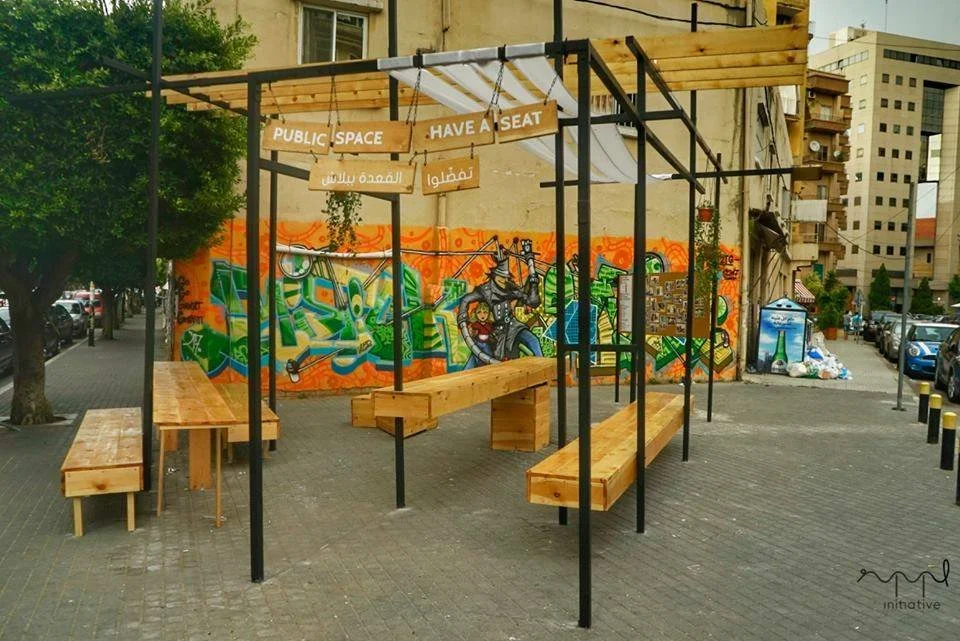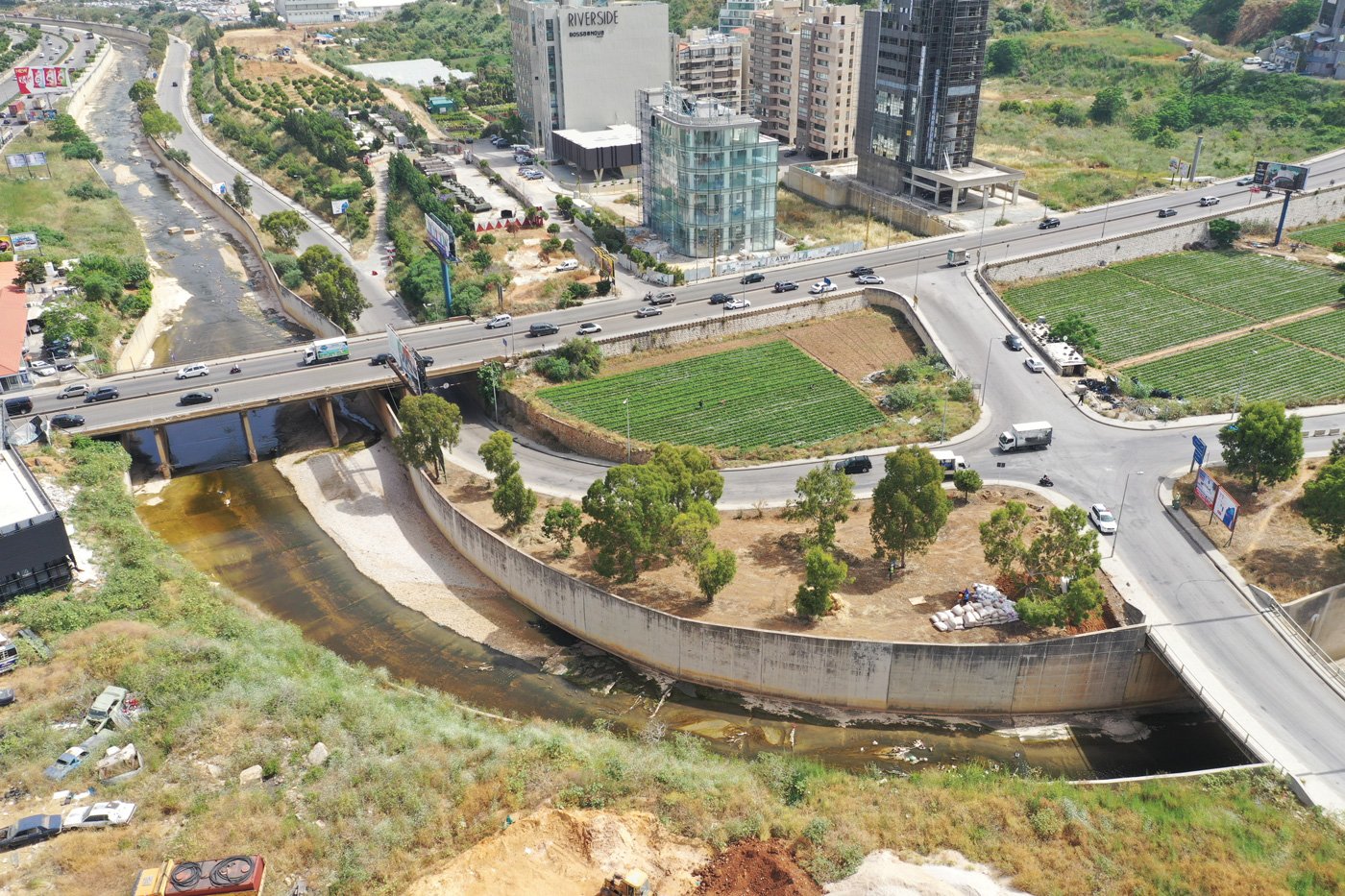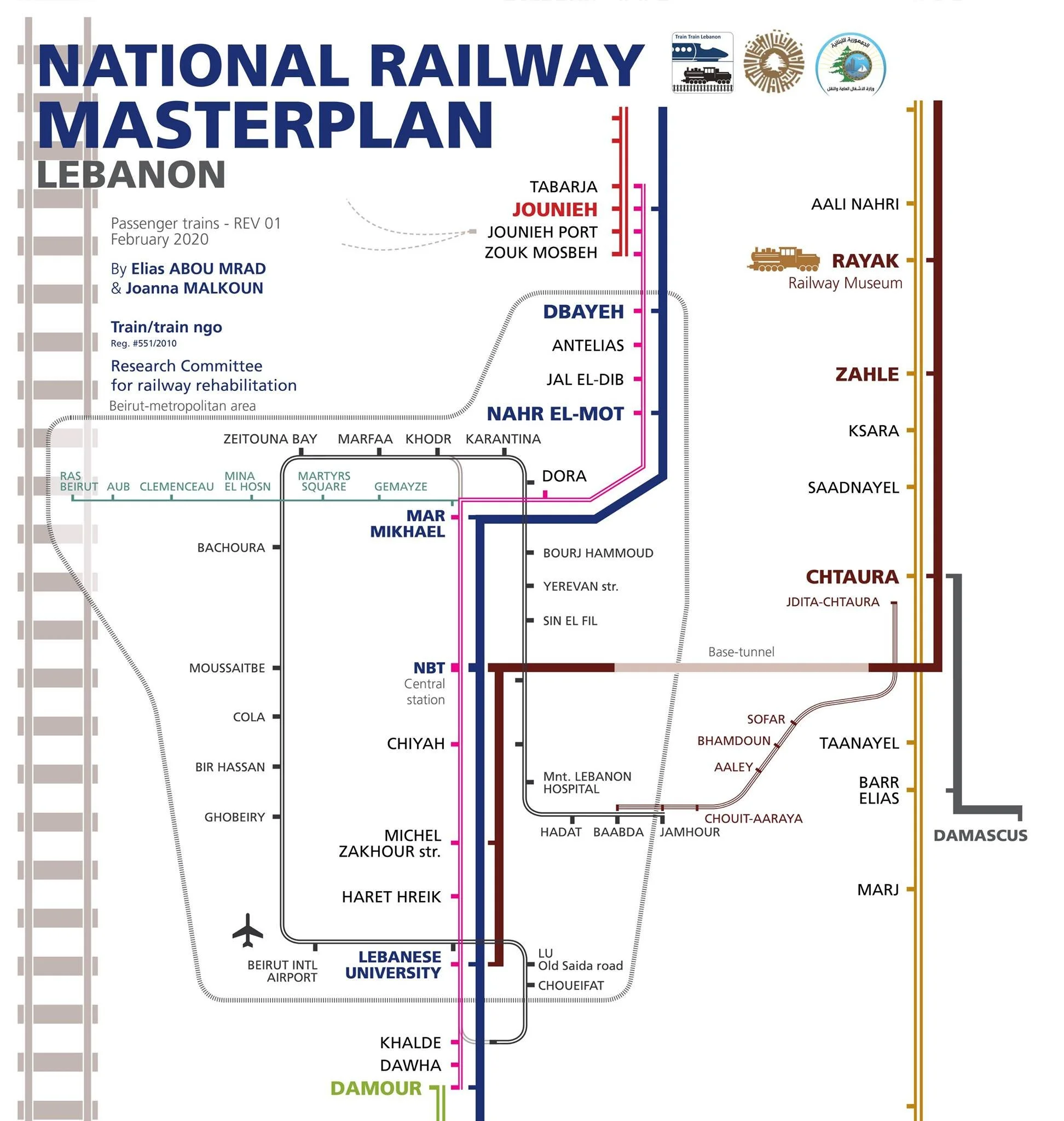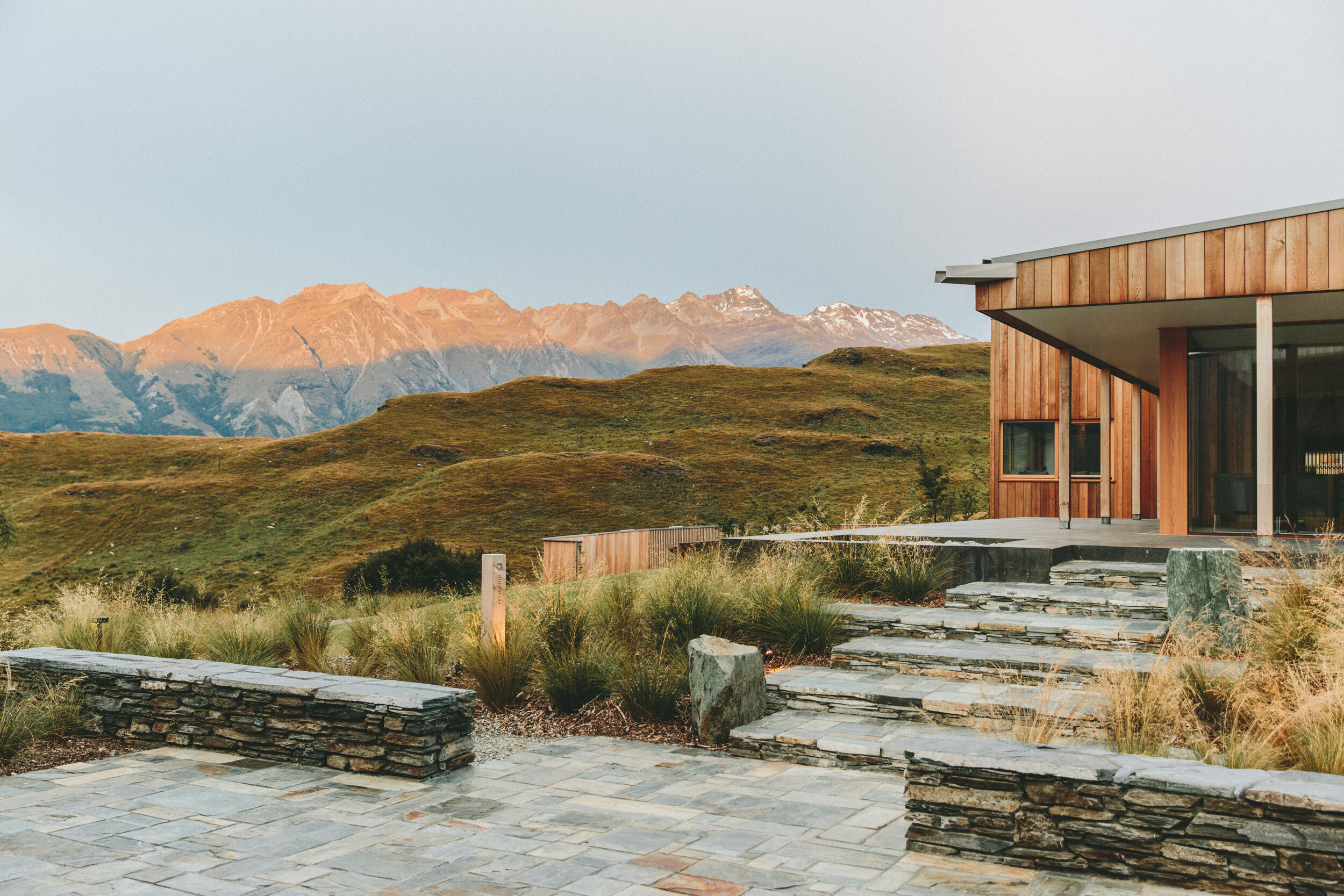
Beirut Urban Initiatives is a 2020 research project by Abbas Sbeity, completed as part of his Global Design thesis at the Académie Libanaise des Beaux-Arts (ALBA). This publication documents urban initiatives in Beirut from 2006–2020, serving as a lasting resource for practitioners and researchers.
The study has shaped much of my current work, including the creation of the Design for Urban Change Toolkit.
ABSTRACT
Beirut, the capital of Lebanon, has been experiencing consecutive socio-political shocks since its independence following the end of the French Mandate in 1948. Bad governance, lack of development, and weak public service are the natural byproducts of the political turmoil in a contested city like Beirut. Consequently, an experimental local practice of urban activism has emerged, expanding beyond the formal, modernist approach to development and city planning. The emergence of Beirut’s Urban Initiatives was a result of local political events between 2006 and 2020, leading to the formation of an alternative participatory social movement in the city that tackled various systemic urban issues, including public engagement, local participation, access to public spaces, public transportation, and waste management.
Design for Urban Change is a research project that investigates
1) The emergence of Beirut’s Urban Initiatives – how did the local context catalyse urban change?
2) The role of design and the designer in the process – how did design help? How can design help?
The research project examines initiatives by dissecting their organisational models, implementation processes, and local participatory methods. The research process included interviews, participatory co-creation sessions, data analysis, and visualisations. The research project positions the designer as a sense-maker and researcher, as I disseminate and present my findings through a publication and a digital database that potentially could be used as a local resource.
Design for Urban Change came in a dire time where Lebanon went through an unprecedented series of events since the uprising in October 2019, the COVID-19 pandemic, and the Beirut blast on August 4th, 2020. The local response to these events was a testament to the cumulative efforts and initiatives investigated in this research.
A DIRECTORY OF BEIRUT URBAN INITIATIVES
-
Established in 2007, the AUB Neighborhood Initiative facilitated the American University of Beirut’s engagement with its surrounding neighborhood in Ras Beirut. It promoted collaboration between faculty, students, staff, residents, and public officials, focusing on issues such as urban environment, community well-being, and social diversity. The Initiative responded to local priorities through research, advocacy, and outreach projects that addressed the lived realities of a socially and economically diverse neighborhood.
-
Launched in 2010 on World Environment Day, the Beirut Green Project emerged as a response to the rapid expansion of cement in the city and the resulting loss of green space. It advocated for the public’s right to accessible green areas and called for more sustainable urban planning models. Through creative interventions and awareness campaigns, the initiative highlighted the environmental and social importance of green public spaces in Beirut.
-
Beirut Urban Tours introduced political tourism as a means to engage with Lebanon’s urban and historical development critically. The walking tour in downtown Beirut shed light on the post-war reconstruction process, addressing its legal, political, social, and archaeological dimensions. Through the lens of urban transformation, the initiative explored broader themes, including memory, governance, and the politics of public space.
-
Initiated in 2012 by Waraq, Beit Waraq functioned as a community space dedicated to illustration, animation, design, and printmaking. Located in the Mazraa district of Beirut, the space offered various studio setups under a co-working model, enabling artists to rent rooms tailored to their craft. Beit Waraq provided spaces for creative production and collaboration through accessible infrastructure and artistic programming.
-
The Beirut Urban Lab is a collaborative, interdisciplinary research platform that investigates urban transformation in Lebanon and the region. Situated within the context of the Global South, it documented spatial practices and environmental shifts through engaged research. The Lab contributed to academic debates and policy discussions while envisioning more just, inclusive, and viable urban futures.
-
Bus Map Project created the first grassroots map of Lebanon’s informal and formal public transport system. It aimed to make existing networks visible and usable, encouraging citizens to engage with available mobility options. Over time, it evolved into Riders’ Rights, a civil society organization that advocates for mobility justice and inclusive public transportation infrastructure across Lebanon.
-
Civil Campaign to Protect the Dalieh of Raouche
This grassroots coalition emerged in 2013 to preserve Beirut’s Dalieh coastline as a public, accessible space. It brought together individuals and organizations committed to protecting the ecological, cultural, and social significance of the site. Through legal advocacy and community mobilization, the campaign resisted privatization and emphasized the need for shared urban commons.
-
Catalytic Action, founded in 2014, functioned as both a design studio and a charity. It supported vulnerable communities—particularly refugees—by improving educational and public spaces. Through participatory spatial interventions across the MENA region and Europe, the initiative aimed to address inequalities and promote social and environmental justice in the built environment.
-
Concept 2092, initiated by Haven for Artists, supported underground art scenes and creative collaborations in Lebanon and the Middle East. Operating as a non-governmental organization, it provided resources, residency programs, and platforms for artists. The initiative promoted artistic experimentation and social engagement through exhibitions, workshops, and community events.
-
The Design Impact Laboratory (DI-LAB) at AUB served as a platform for applied research and community-based design. It engaged students and faculty in developing architectural and engineering responses to environmental, heritage, and post-conflict challenges. DI-LAB emphasized participatory processes to ensure that its interventions reflected local needs and fostered sustainable development.
-
District D was a Beirut-based collective comprising urbanists, designers, and architects dedicated to tactical urbanism. The group designed and implemented small-scale interventions in public spaces to activate underutilized areas and inspire community interaction. It combines work and design thinking with grassroots strategies to address urban livability.
-
Legal Agenda was a nonprofit research and advocacy organization founded in 2009 to promote critical approaches to law and justice in Arab countries. With offices in Lebanon and Tunisia, it addressed political, social, and economic rights through legal research, public discourse, and reform campaigns. The organization engaged legal professionals, scholars, and activists in shaping inclusive legal systems.
-
Nahnoo is a youth-led NGO working to promote good governance, cultural heritage, and inclusive public spaces in Lebanon. Through grassroots campaigns, research, and policy advocacy, it created platforms for civic engagement and youth participation. The organization mobilized volunteers and professionals nationwide to co-shape urban and social development.
-
Founded in 2012, Public Works Studio was a research-based initiative focused on spatial justice and urban inequality. It developed multi-disciplinary projects that challenged dominant planning paradigms and supported the right to the city. The studio combined field research, legal advocacy, and participatory design to engage with the root causes of spatial marginalization.
-
RPPL was an initiative launched by young architects and urbanists aimed at activating public spaces through creative design. Started by graduates from ALBA, the collective engaged artists and designers in projects that enhanced accessibility and interaction in public areas across Lebanon. It functioned as a collaborative platform for youth-led spatial interventions.
-
The Chain Effect promoted cycling as a sustainable mobility solution in Beirut. Through design, public art, and advocacy, it worked to shift perceptions of urban transportation and create a more bike-friendly city. The organisation implemented creative street interventions, workshops, and community events to encourage active mobility and improve public infrastructure.
-
theOtherDada is an architecture practice focused on ecological design and social engagement. It adopted a biomimetic approach to spatial interventions, placing nature and community at the center of its work. The studio combined architectural experimentation with sustainability strategies to address urban and environmental challenges.
-
Founded in 2015, Train/Train advocated for the rehabilitation of Lebanon’s railway system and the preservation of its industrial heritage. Built on years of research and civic engagement, the initiative aimed to reactivate the rail network as a public good and stimulate national discussions about sustainable mobility and infrastructure preservation.
-
While not necessarily a grassroots initiative, the establishment of UN-Habitat in Lebanon related to the urban development and interventions’ history in Lebanon as it was established after the 2006 Israeli war. UN-Habitat Lebanon operated as part of the UN’s global mission to promote sustainable urban development. In the absence of a coherent national urban policy, the country program focused on inclusive development, improved planning systems, and crisis response. Its interventions addressed housing, mobility, resilience, and governance in both stable and crisis-affected areas.
-
The Zokak El-Blat Neighborhood Initiative emerged following the 2016 Beirut Madinati campaign. Focused on the Zokak El-Blat area, it sought to revitalize the neighborhood through participatory planning and community engagement. The initiative encouraged residents to become active in shaping urban policies and reclaiming decision-making power over their shared environment.
